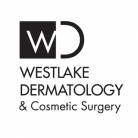Skin Care Ingredient Focus: Salicylic Acid
What is salicylic acid?
Salicylic acid is a beta hydroxy acid (BHA) that is derived from aspirin (salicylates). It’s a colorless, crystalline organic acid that functions as a hormone within plants. Commonly derived from the bark of a willow tree, salicylic acid was used as a fever reducing medicine as far back as 1763. It is best known today for being a key active ingredient in various acne skin care treatments. (Source: Wikipedia).
How is salicylic acid used?
At over-the-counter concentrations of between 0.5 percent to 2 percent, salicylic acid is a multifunctional ingredient that is primarily used to treat acne. It’s also a powerful exfoliant that can be used to lighten dark spots (correct pigmentation issues), smooth rough skin, and treat various chronic skin conditions like seborrheic dermatitis, psoriasis, and acanthosis nigricans.
At a lower concentration salicylic acid can relieve redness and irritation, while higher concentrations can be used to remove warts, calluses, and corns.
Finally, salicylic acid can be used to address dandruff by ridding the scalp of dry and flaky skin.
How does salicylic acid work?
Salicylic acid works to break down the bonds that hold skin cells together. Basically, it causes the outermost layers of the skin (epidermis) to become unglued, resulting in the shedding of old dead skin cells. In addition to exfoliating the skin’s surface, salicylic acid is oil-soluble which enables it to penetrate deep into the pore and exfoliate it from the inside.
How can salicylic acid benefit the skin?
Acne
Salicylic acid works to treat acne in two ways. First, it clears away dead skin cells, excess oil, and other debris that typically clogs pores and causes acne. Secondly, regularly using salicylic acid can actually train the skin to reduce excess sebum (oil) production. It’s a great ingredient for treating current blackheads and whiteheads as well as preventing future comedones from developing.
Skin Tone & Texture
As a powerful exfoliator, salicylic acid use can improve your skin tone by brightening the skin and removing the appearance of discolorations, post-acne marks, and other blemishes. The removal of dead skin cells at the surface also results in a softer and smoother feel.
Skin Rejuvenation
The exfoliating properties of salicylic acid gives it renewing properties, promoting cellular turnover of the skin. As old (dead) skin cells become replaced with new skin cells the skin can look and feel firmer, plumper, and more youthful. Over time, salicylic acid use can actually reduce the appearance of wrinkles and lines by promoting collagen production.
Adding salicylic acid to your skin care regimen
Salicylic acid is an ingredient in a variety of products including cleansers, moisturizers, medicated pads, and concentrated serums. To reduce the likelihood of skin irritation its best to limit your salicylic acid usage to a single product.
Its normal to experience some stinging, peeling, and reddening of the skin over your first few uses. However, these side effects typically lessen over time as the skin gets used to it. Individuals with more sensitive skin may choose to begin using salicylic acid at a lower concentration before working their way to the maximum concentration of 2%.
It’s always a good idea to discuss adding salicylic acid to your daily skin care regimen with your dermatologist or skin care professional.
Are there any side effects?
Salicylic acid can dry out excess oil from the skin. However, there is the potential for it to remove too much oil leading to the most common side effects: skin dryness and irritation.
Additional side effects can include:
- Itchiness
- Peeling
- Hives
- Stinging or tingling sensations
The continued use of salicylic acid can also increase the skin’s sensitivity to the sun. As such, users should avoid extended UV exposure and use a high SPF broad spectrum sunscreen to protect the skin from sustaining sun damage.
Salicylic acid should not be used by someone allergic to aspirin. Allergic reactions, while possible, are extremely rare. Seek immediate medical attention if you experience difficulty breathing or severe swelling.
Disclaimer: The contents of the Westlake Dermatology website, including text, graphics, and images, are for informational purposes only and are not intended to substitute for direct medical advice from your physician or other qualified professional.

